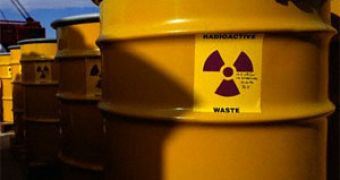In case one or two of the greenheads presently inhabiting the earth ever wondered what could possibility be more blame-worthy than drilling for oil in the Arctic, the answer is quite simple: drilling for oil in former Soviet nuclear dumping sites.
More precisely, it seems that Exxon Mobil and Rosneft, both of which are major oil and gas companies, are now looking into the possibility of engaging in drilling activities in the Kara Sea, just north of Siberia.
Given the fact that the Kara Sea is part of the Arctic Ocean, environmentalists are bound to do more than just frown upon this project.
More so seeing how, if these two companies are to have their way, said drilling activities will take place in what used to be a radioactive material dumping site for the Soviet Union for about 25 years or so.
Oil Price informs us that, according to preliminary estimates, the nuclear waste put to rest in the Kara Sea by the Soviet Union amounts to 17,000 barrels of radioactive material, a few nuclear reactors that passed their expiration date, and an old-fashioned K-27 nuclear submarine, abandoned there by the Soviet navy back in 1981.
Still, the region that Exxon Mobil and Rosneft have set their eyes on supposedly holds enough oil to meet the energy demands of the whole world for five years to come, so it is no wonder that the aforementioned companies are more than willing to give this project a try.
Commenting on these plans, an ecologist presently working with a Norwegian campaign group known as Bellona made a case of how, “Oil companies should make sure that the area is swiped clean of nuclear waste before they start any oil exploration activity.”
On the upside, Rosneft told members of the press that due consideration will be given to these warnings, and that, “All ecological and nature protection norms are being followed at the same time.”
For the time being, a team of scientists is looking into the risks associated with drilling in this region, and more information is expected to soon be made available to the general public.

 14 DAY TRIAL //
14 DAY TRIAL //